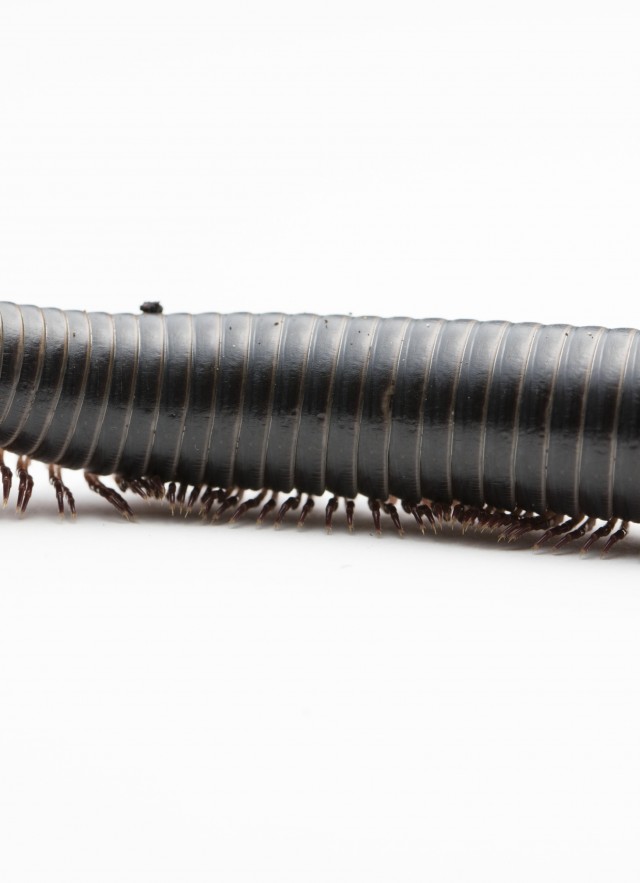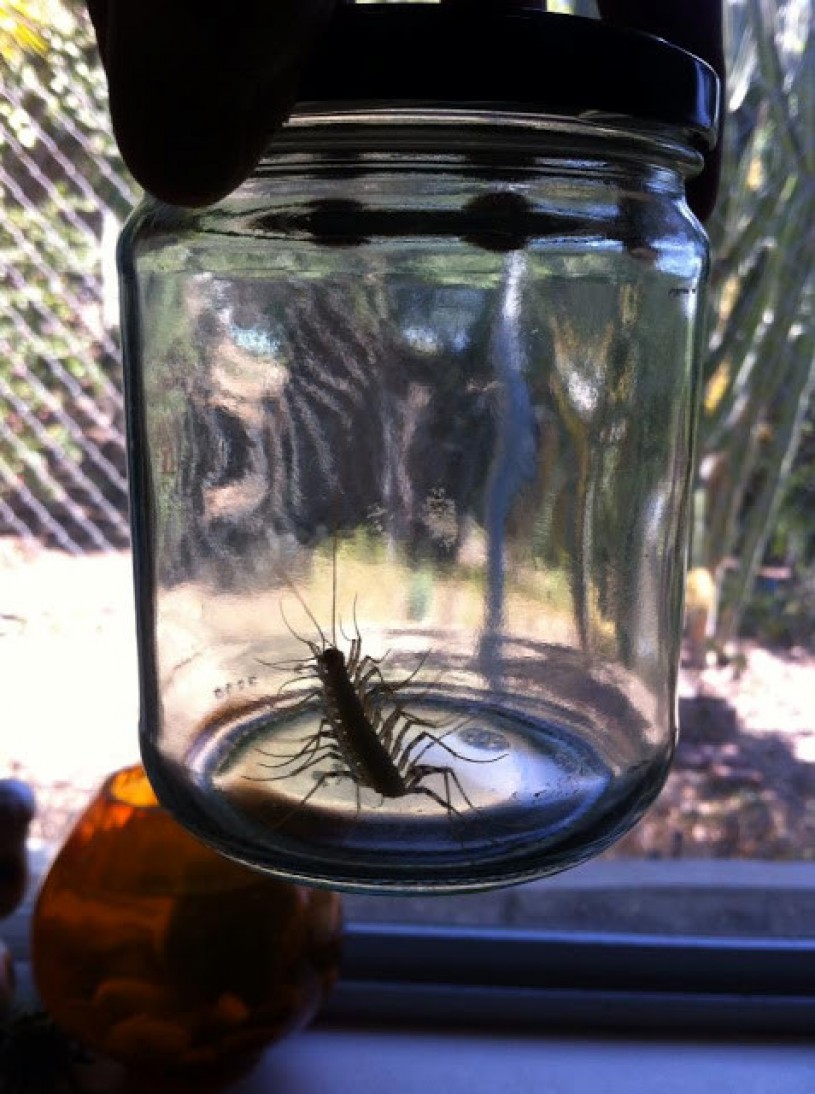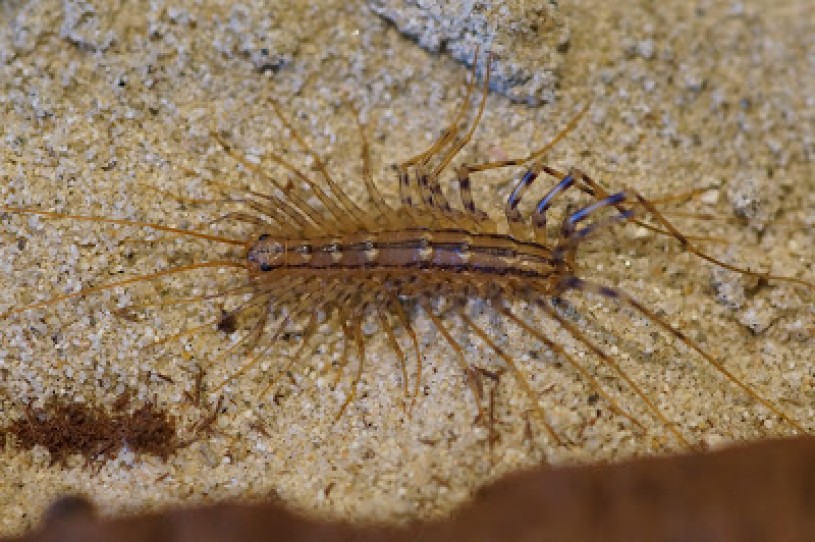The Hart Museum remains closed. Los Angeles County has approved a plan to transfer the William S. Hart Museum and Park from the County to the City of Santa Clarita.
Sink Bugs, Bathtub Bugs, Eyelash Bugs, or House Centipedes?
Ever seen a weird creature stranded in your bathtub, that could easily be mistaken for a discarded fake eyelash?

Ever seen a weird creature stranded in your bathtub, that could easily be mistaken for a discarded fake eyelash? Two of my friends, Matt and Kristi, have (p.s. they're museum members too). In fact, they often find them in their bathroom. However, this week they had an unusual sighting. Matt was sleepily making breakfast and pulled out a package of oatmeal–lo and behold an eyelash bug darted out from the cupboard! Seriously, these bugs are FAST, so it's not surprising that it startled him. Quick to recover, he grabbed the nearest empty jar (only a bit of pickle juice was left), and captured the bug. Kristi kindly brought the bug to the museum, so it could pose for a photo shoot and I could write this blog. Thanks guys!

Love the gloves Kristi! So what is it? This bug is a house centipede, Scutigera coleoptrata. It is another one of those creatures that calls our homes their homes. However, unlike some of the other arthropods that live with us, this guy is a predator that eats other household pests. Case in point–after we received Matt and Kristi's eyelash bug, we made it a little habitat and gave it some food. We popped a dermestid beetle larva in with it and it made quick business devouring it. You can see the remains of the beetle in the lower left of the picture below. FYI–dermestid beetles are pests that can eat wool, silk, leather, fur, pet hair, feathers and sometimes spices and grains too!

Seriously, this centipede knows how to work the camera! Here's what Insects of the L.A. Basin has to say about them: "This centipede is about an inch (25mm) long and distinctive because of its very long slender legs; there are only 15 pairs of legs in adults, and the last pair is much longer than the rest (in the female they are twice as long as the body). The entire body is exceedingly frail and pale translucent-bluish in general color. The species is very active and moves rapidly in attempts to escape capture and to snatch the small insects it requires as food. Individuals are commonly found indoors, darting across the floor or clinging to a wall. They are particularly attracted to bathtubs, washbasins, and damp basements. Outdoors they are active in the summer and fall; most summer evenings, a certain house centipede visits my porch light to catch insects that it attracts. It is doubtful that this species of centipede can even inflict a wound to human skin, so it should not be considered dangerous. It is actually beneficial in that it preys on many insect house pests, such as silverfish."